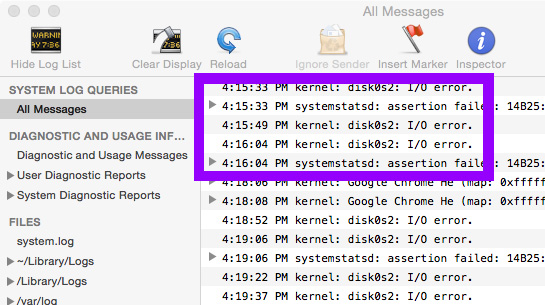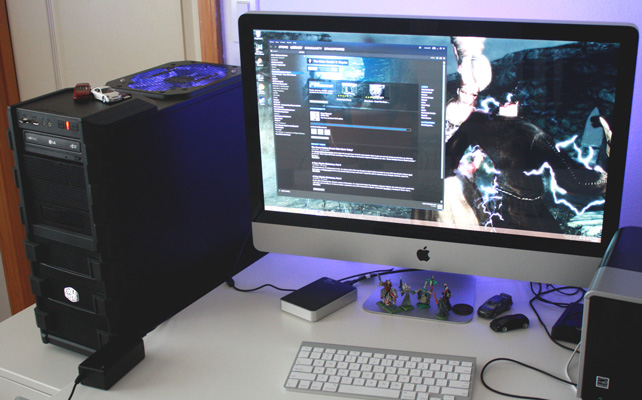iMac External Startup Drive
My late 2009 iMac began showing signs of hard drive (HD) failure including applications loading slower, media reading errors, and increasing number of pinwheels (beachballs) showing up. I had already replaced this iMac with a newer Mac for work, and the 5 year-old iMac had been delegated as a media server and second monitor for my gaming PC. One of the reasons I chose the iMac was for its extended life as a high-quality 27-inch monitor using DisplayPort. This target display mode feature requires a running OS which meant I needed a working drive booting OS X.
The big drawback of an all-in-one is the increased difficulty in replacing the internal HD. Opening the iMac and replacing the HD with an SSD is an option, but I didn’t want to spend resources on an already replaced 5 year-old PC. Instead, I used what I had available: an external 2 TB Western Digital My Passport Studio FireWire drive to boot OS X.
How to tell if your Mac has drive read/write errors
- Identify an application that is loading slower, or frequently causing the pinwheels to show up.
- In Applications (or Launch Pad) and inside Other (Utilities) folder, open Console.
- Select “Clear Display” and make sure “All Messages” is highlighted under “System Log Queries.”
- Use that application you picked in step 1 and watch the console. If you see, an I/O error on your disk (such as disk0s2) as seen in the screenshot then there’s likely a problem related to the hard drive. The console may include other errors related to the application.

Other issues may cause your system to slow down including limited memory, a rogue application, or the OS drive is near maximum capacity. In my case, the drive had been exhibiting increasing number of read/write errors in several applications including Chrome and iTunes. My drive also happened to be on a recall list in 2012 so I had been expecting to replace it.
###Using an external drive to boot OS X 10.10
Naturally, it’s best to select a drive and port fast enough to handle the intended tasks. More recent Macs have Thunderbolt or USB 3, but the only ports on a 2009 iMac are USB 2 and FireWire. Since FireWire 800 is faster than USB 2, I went with my Western Digital My Passport Studio FireWire drive I had on hand. I don’t recommend using USB 2.
I won’t go over the details on how to install OS X 10.10 on an external drive. There are good examples with screenshots all over the web, and for anyone with experience installing a clean OS on a PC, the process is very easy.
Quick OS X 10.10 external drive installation steps
- Backup the current HD. I used Time Machine.
- Move existing data off the intended external boot drive. Moving a TB+ of data may take several hours.
- Use the OS X 10.10 Yosemite Installer (available on Mac App Store) to install to the external drive (see Show All Disks) and select Time Machine to restore documents and applications.
After I was up and running on my external drive, I noticed faster load times without the pinwheels. As a precaution, I reformatted my internal HD with secure-erase. I also needed to juggle my iTunes media around manually since my drives changed sizes and didn’t all fit as before.
My 2009 iMac should continue working as a media server and PC monitor for several more years.

Update: The old iMac was retired in January 2016 due to graphics card death. I recycled the parts in May.
iMac is a trademark of Apple.